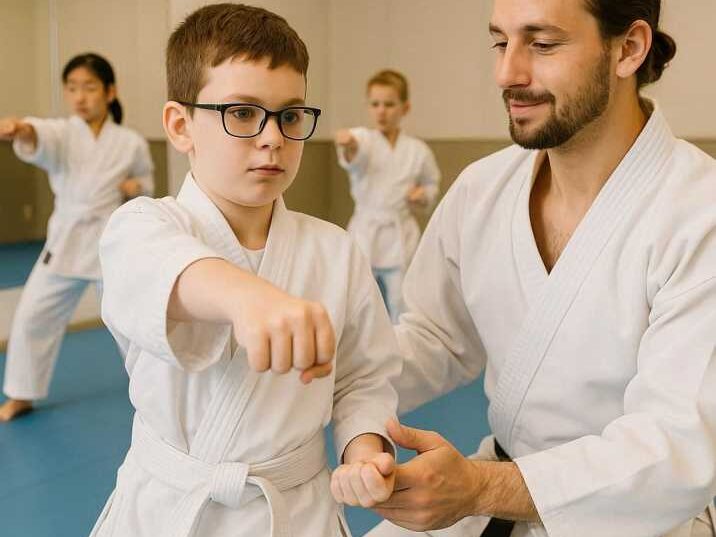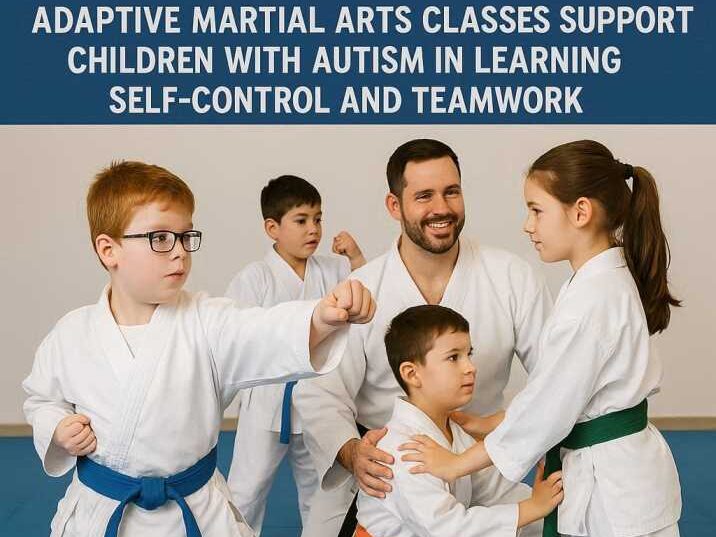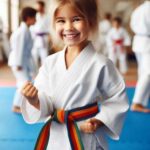Introduction
Table of Contents
Many parents of children with autism ask one big question: Can autistic kids do martial arts? The short answer is yes. With the right support, martial arts can be a great activity for autistic children.
Martial arts are not just about kicks or punches. They build focus, patience, confidence, and self-control. These are skills that children with autism often need help developing in daily life.
Parents want safe, structured, and positive environments for their kids. Martial arts schools often provide exactly that. Let’s explore how martial arts can help children with autism grow mentally, physically, and emotionally.

What Martial Arts Mean for Autistic Kids
Understanding the Basics
Martial arts include different styles like Karate, Taekwondo, Jiu-Jitsu, and Judo. Each style teaches discipline, body awareness, and respect. For autistic children, these values can help improve behavior and social interaction.
Classes are often repetitive, predictable, and structured. These are comforting traits for many kids on the autism spectrum. A consistent environment helps reduce anxiety and builds confidence.
Some instructors specialize in adaptive martial arts programs made for children with special needs. These programs adjust pace, use visual cues, and focus on small, steady progress.
Benefits of Martial Arts for Autistic Kids
1. Improves Focus and Attention
Many children with autism find it hard to stay focused on one task. Martial arts classes use repetition and structured routines that train the mind to concentrate. Each move requires attention to timing, balance, and control. Over time, this consistent practice helps children focus better not only in class but also at home and school.
2. Builds Confidence
Progress in martial arts is visible through belts, ranks, and achievements. Each milestone teaches kids that effort brings results. When a child earns a new belt, it builds pride and belief in their abilities. This growing confidence often carries over into other parts of life, such as learning and social interactions
3. Encourages Social Skills
Martial arts classes create safe spaces where kids learn teamwork and respect. They practice listening to the instructor, waiting for turns, and working with partners. These interactions help autistic children understand social rules in a controlled environment. Over time, they become more comfortable communicating and cooperating with others.
4. Develops Motor Skills and Coordination
Many autistic children struggle with movement control and body awareness. Martial arts improve balance, flexibility, and coordination through consistent physical drills. Kicks, punches, and stances teach rhythm and precision. These skills also make daily activities like walking, running, or playing easier and more confident.
5. Reduces Stress and Anxiety
The calm, structured nature of martial arts helps children manage emotions. Breathing exercises, predictable routines, and gentle movement reduce overstimulation. Physical activity also releases built-up energy and tension. Parents often notice fewer meltdowns and more emotional balance after consistent practice.
Possible Risks or Concerns
While martial arts have many benefits, parents should understand potential challenges.
1. Sensory Overload
Many autistic children have heightened sensitivity to sounds, lights, or physical touch. A noisy dojo, loud music, or shouting can cause distress or distraction. Bright lights or sudden contact during sparring may feel uncomfortable. To avoid this, parents should look for smaller, calmer studios with controlled environments. Private or semi-private classes can also help children learn comfortably without feeling overwhelmed.
2. Difficulty with Transitions
Transitions between drills or changes in routine can be challenging for autistic kids. Unexpected shifts, like a new instructor or different exercise, may trigger anxiety. Using clear visual schedules, step-by-step instructions, and verbal warnings before each change helps reduce stress. Instructors who maintain consistent class structures create a sense of safety and predictability. Over time, this consistency helps children handle transitions with more ease.
3. Frustration During Training
Learning martial arts requires patience and repetition, which can sometimes frustrate autistic children. When they struggle with a new move or face correction, they may feel discouraged. Skilled instructors who understand autism use calm communication, praise small successes, and adjust teaching pace. Breaking tasks into smaller, achievable steps helps reduce frustration. This supportive approach keeps training positive and builds emotional resilience.
4. Physical Safety
Martial arts involve physical contact, so safety must be a top priority. Children may misjudge distance or react unpredictably during sparring. Proper supervision, safe equipment, and age-appropriate drills reduce risks. Parents should confirm that the school enforces protective gear like helmets and mouthguards. Instructors trained in working with special needs children know how to prevent accidents and maintain a secure learning environment.
Safety Tips and Best Practices
Parents can make martial arts a safe, rewarding experience by following these tips:
Before Joining
Before enrolling your child, visit the dojo and observe how the class is run. Notice if the environment feels calm, organized, and suitable for your child’s needs. Talk to the instructor about your child’s sensitivities, such as noise or touch triggers. Ask if they have experience teaching autistic students and how they adapt lessons. Choose programs that value structure, patience, and personal growth over competition.
During Classes
Start with short or private sessions so your child can adjust at their own pace. Being present during the first few classes helps your child feel secure and supported. Use simple praise to reward effort, not just achievement, to build confidence. Stay in touch with the instructor about your child’s comfort level and any challenges they face. Open communication ensures progress and trust.
At Home
Reinforce what your child learns by practicing simple movements together. This repetition helps with memory, coordination, and confidence. Talk about focus, calm breathing, and respectful behavior outside class to build consistency. Keeping a steady training schedule reduces anxiety and helps your child know what to expect each week. Routine and support at home make martial arts learning more effective.
Recommended Martial Arts for Autistic Kids
| Martial Art Type | Best For | Key Benefits |
|---|---|---|
| Karate | Beginners | Discipline, focus, and structure |
| Taekwondo | High-energy kids | Strength, balance, and coordination |
| Judo | Hands-on learners | Safe body control, teamwork |
| Brazilian Jiu-Jitsu (BJJ) | Sensory-sensitive kids | Calm, close-contact learning, confidence |
| Aikido | Older kids | Gentle movements, emotional control |
Each martial art can help differently. The best choice depends on your child’s interests, comfort level, and sensory tolerance.

Conclusion
So, can autistic kids do martial arts? Absolutely. With patient instructors, structured programs, and family support, martial arts can help autistic children grow stronger inside and out.
Parents often see better focus, emotional control, and improved social skills. Each kick, stance, and bow builds confidence and teaches respect.
Start slow, stay consistent, and celebrate progress. Martial arts are not just a sport, they are a path to self-growth and independence.
FAQs About Autistic Kids and Martial Arts
1. Can autistic kids handle group classes?
Yes, but start with small groups or private lessons. Gradual exposure helps them adjust socially and emotionally.
2. What age should autistic children start martial arts?
Most programs accept children as young as four or five. Early introduction builds focus and motor control.
3. How do I find the right instructor?
Look for instructors with certifications in adaptive or inclusive martial arts. Experience with special needs training is a must.
4. Are martial arts safe for autistic kids?
Yes, if proper safety rules, gear, and supervision are followed. Choose schools with clear structure and patience-based teaching.
5. How soon will I see results?
Every child progresses at their own pace. Small improvements in attention, calmness, and confidence often appear within weeks.

